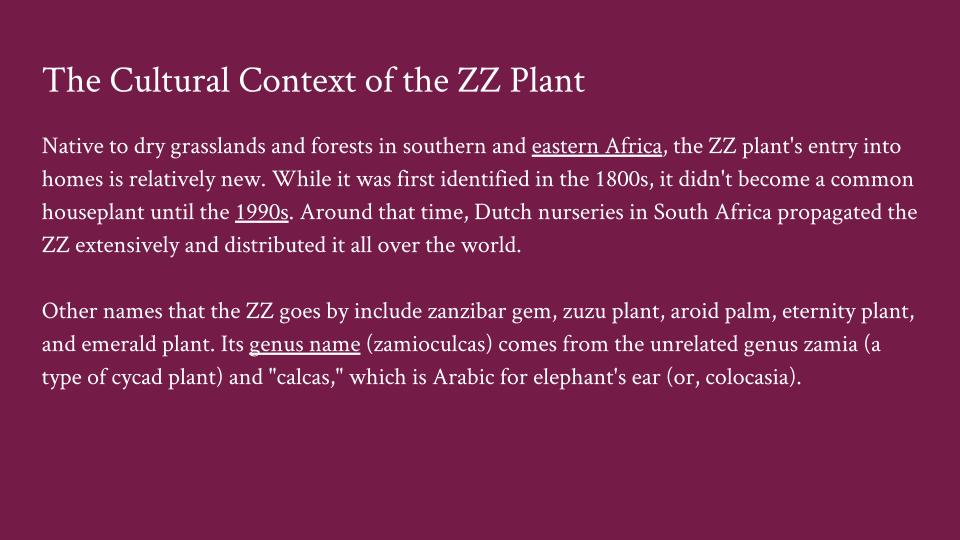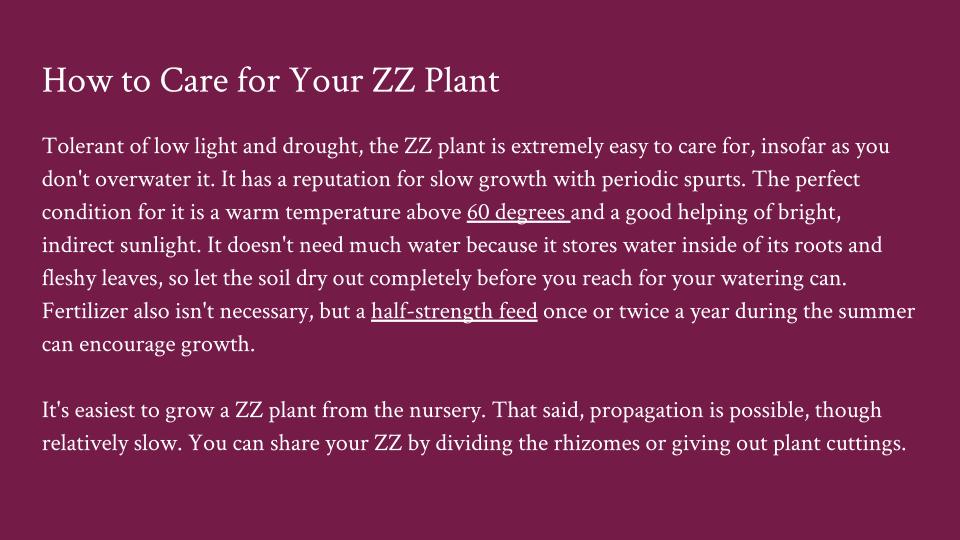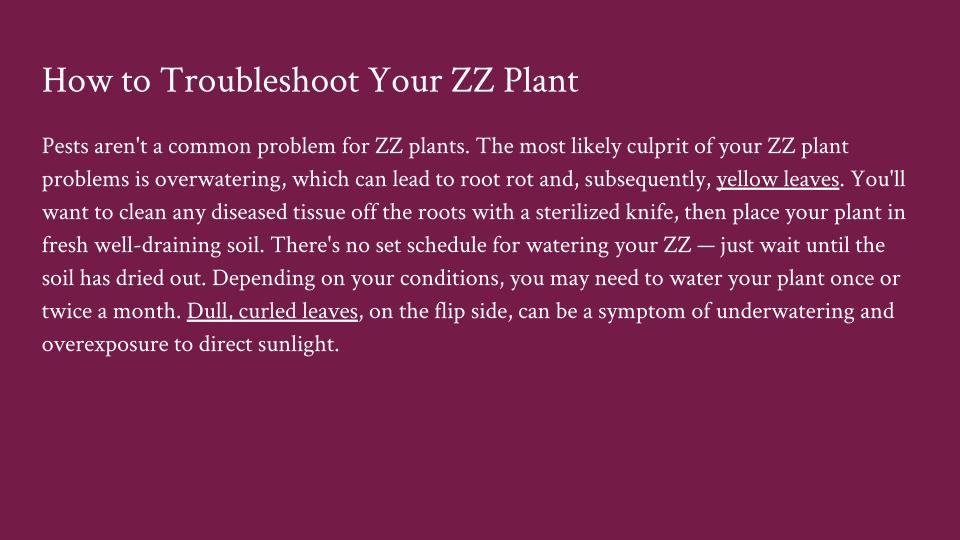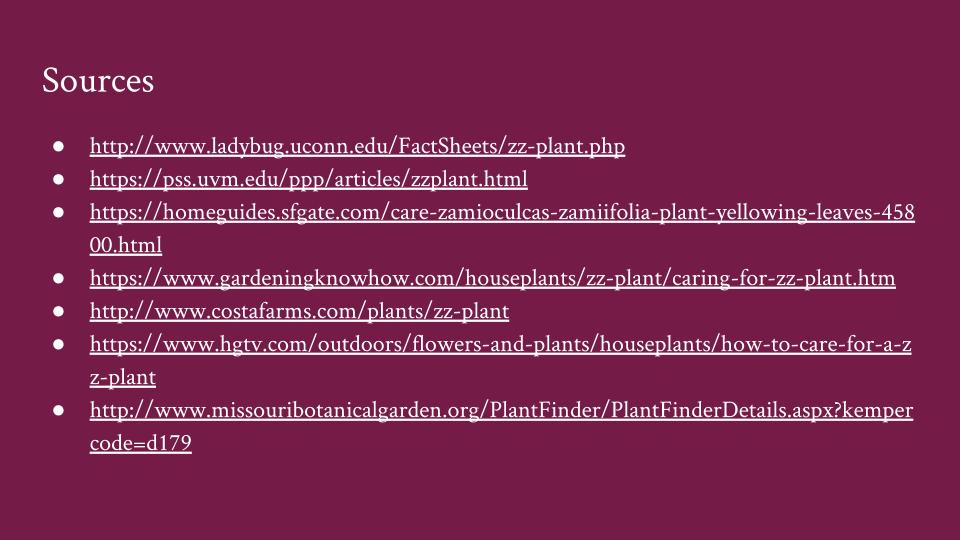The ZZ plant is nothing to yawn at! Dubbed the “unkillable houseplant,” zamioculcas zamiifolia makes for an agreeable and low-key addition to any plant collection. Its beautiful foliage almost looks plastic, coming with a dark green glossy finish. But despite growing relatively slowly, the ZZ is much more rewarding than a fake plant (in my humble opinion anyway). You’ll frequently find it used for sprucing up corners in medical offices, salons, restaurants, and more.
But I’ll let you in on a secret: I’ve killed a ZZ plant from severe neglect! Like any houseplant, it appreciates having the best conditions possible — that’s to say, adequate watering and plenty of bright, indirect sunlight. While the ZZ is notorious for being drought tolerant, severe underwatering will lead to dull, curled up leaves. A little bit of love and attention will go a long way, though. Give your plant the minimal level of care, and you’ll be blessed with a beautiful, non-fussy companion.
How to Identify a ZZ Plant
The ZZ plant has a simple but distinct look. Its rhizomatous roots (they resemble bulbs) stretch out stems with glossy oval leaves. As a houseplant, it can grow up to three feet tall. Mature plants can bloom flowers that consist of a spadix (an erect spike with tiny creamy flowers) encased by a green spathe — they look similar to the blooms that you may find on a peace lily. The ZZ plant is known for removing air pollutants, but do be aware that all parts of the plant are toxic if ingested. It may also cause skin irritation, so you should always wash your hands after handling a ZZ.
ZZ plants typically have dark, glossy green leaves. You may also encounter the ZZ raven, which has dark purple foliage that almost appears black. The zamicro is another variety — and as its name implies, it’s slightly smaller than regular ZZs.

The Cultural Context of the ZZ Plant
Native to dry grasslands and forests in southern and eastern Africa, the ZZ plant’s entry into homes is relatively new. While it was first identified in the 1800s, it didn’t become a common houseplant until the 1990s. Around that time, Dutch nurseries in South Africa propagated the ZZ extensively and distributed it all over the world.
Other names that the ZZ goes by include zanzibar gem, zuzu plant, aroid palm, eternity plant, and emerald plant. Its genus name (zamioculcas) comes from the unrelated genus zamia (a type of cycad plant) and “calcas,” which is Arabic for elephant’s ear (or, colocasia).

How to Care for Your ZZ Plant
Tolerant of low light and drought, the ZZ plant is extremely easy to care for, insofar as you don’t overwater it. It has a reputation for slow growth with periodic spurts. The perfect condition for it is a warm temperature above 60 degrees and a good helping of bright, indirect sunlight. It doesn’t need much water because it stores water inside of its roots and fleshy leaves, so let the soil dry out completely before you reach for your watering can. Fertilizer also isn’t necessary, but a half-strength feed once or twice a year during the summer can encourage growth.
It’s easiest to grow a ZZ plant from the nursery. That said, propagation is possible, though relatively slow. You can share your ZZ by dividing the rhizomes or giving out plant cuttings.
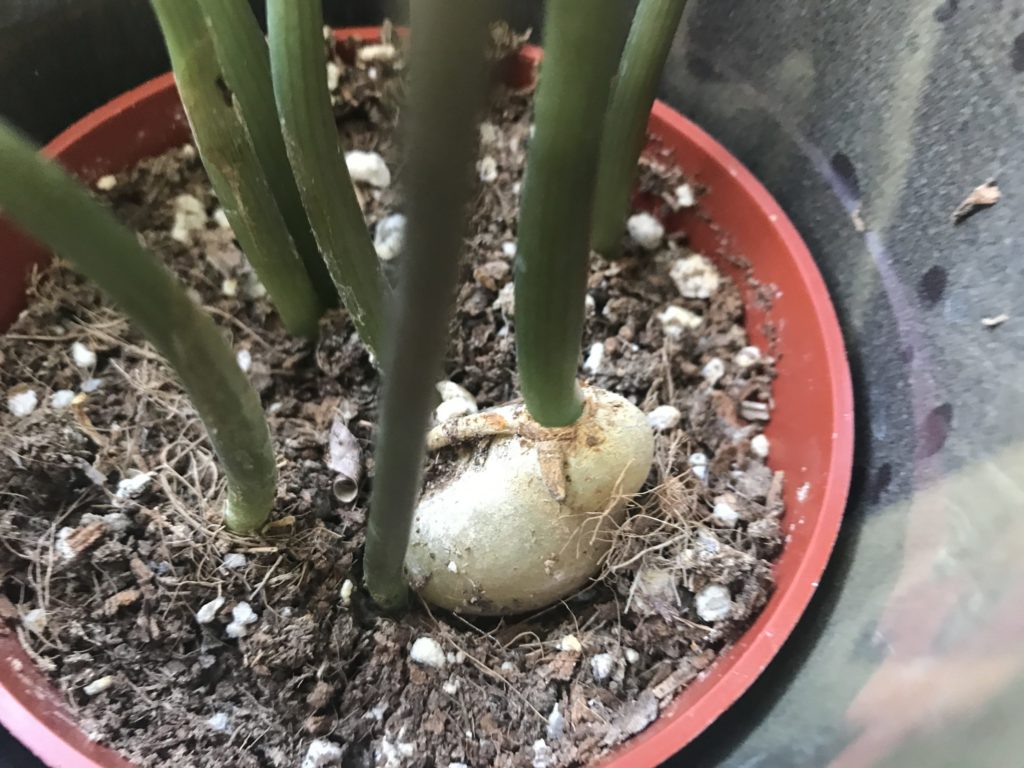
How to Troubleshoot Your ZZ Plant
Pests aren’t a common problem for ZZ plants. The most likely culprit of your ZZ plant problems is overwatering, which can lead to root rot and, subsequently, yellow leaves. You’ll want to clean any diseased tissue off the roots with a sterilized knife, then place your plant in fresh well-draining soil. There’s no set schedule for watering your ZZ — just wait until the soil has dried out. Depending on your conditions, you may need to water your plant once or twice a month. Dull, curled leaves, on the flip side, can be a symptom of underwatering and overexposure to direct sunlight.
Dull, curled leaves, on the flip side, can be a symptom of underwatering and overexposure to direct sunlight.
Sources
- http://www.ladybug.uconn.edu/FactSheets/zz-plant.php
- https://pss.uvm.edu/ppp/articles/zzplant.html
- https://homeguides.sfgate.com/care-zamioculcas-zamiifolia-plant-yellowing-leaves-45800.html
- https://www.gardeningknowhow.com/houseplants/zz-plant/caring-for-zz-plant.htm
- http://www.costafarms.com/plants/zz-plant
- https://www.hgtv.com/outdoors/flowers-and-plants/houseplants/how-to-care-for-a-zz-plant
- http://www.missouribotanicalgarden.org/PlantFinder/PlantFinderDetails.aspx?kempercode=d179





